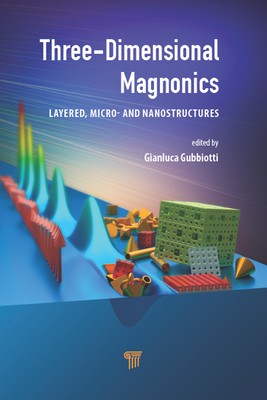
- We will send in 10–14 business days.
- Publisher: Jenny Stanford Publishing
- ISBN-10: 9814800732
- ISBN-13: 9789814800730
- Format: 15.5 x 23.1 x 2.5 cm, hardcover
- Language: English
- SAVE -10% with code: EXTRA
Three-Dimensional Magnonics (e-book) (used book) | bookbook.eu
Reviews
Description
Magnonics, a research field that uses spin waves, collective excitations of ordered magnetic materials, or magnons (their quanta) as a tool for signal processing, communication, and computation, has rapidly grown during the past decade because of the low-energy consumption and potential compatibility with next-generation circuits beyond CMOS electronics. The interest in 3D magnonic nanostructures follows the latest trend in conventional electronics based on expansion from 2D planar to 3D vertically integrated structures. To remain on the same technological level, a similar expansion should be realized in magnonics.
Following this trend, this book provides an overview of recent developments in the exploitation of the third dimension in magnonics, with special focus on the propagation of spin waves in layered magnonic crystals, spin textures, curved surfaces, 3D nano-objects, and cavity magnonics.
EXTRA 10 % discount with code: EXTRA
The promotion ends in 18d.19:16:49
The discount code is valid when purchasing from 10 €. Discounts do not stack.
- Publisher: Jenny Stanford Publishing
- ISBN-10: 9814800732
- ISBN-13: 9789814800730
- Format: 15.5 x 23.1 x 2.5 cm, hardcover
- Language: English English
Magnonics, a research field that uses spin waves, collective excitations of ordered magnetic materials, or magnons (their quanta) as a tool for signal processing, communication, and computation, has rapidly grown during the past decade because of the low-energy consumption and potential compatibility with next-generation circuits beyond CMOS electronics. The interest in 3D magnonic nanostructures follows the latest trend in conventional electronics based on expansion from 2D planar to 3D vertically integrated structures. To remain on the same technological level, a similar expansion should be realized in magnonics.
Following this trend, this book provides an overview of recent developments in the exploitation of the third dimension in magnonics, with special focus on the propagation of spin waves in layered magnonic crystals, spin textures, curved surfaces, 3D nano-objects, and cavity magnonics.


Reviews